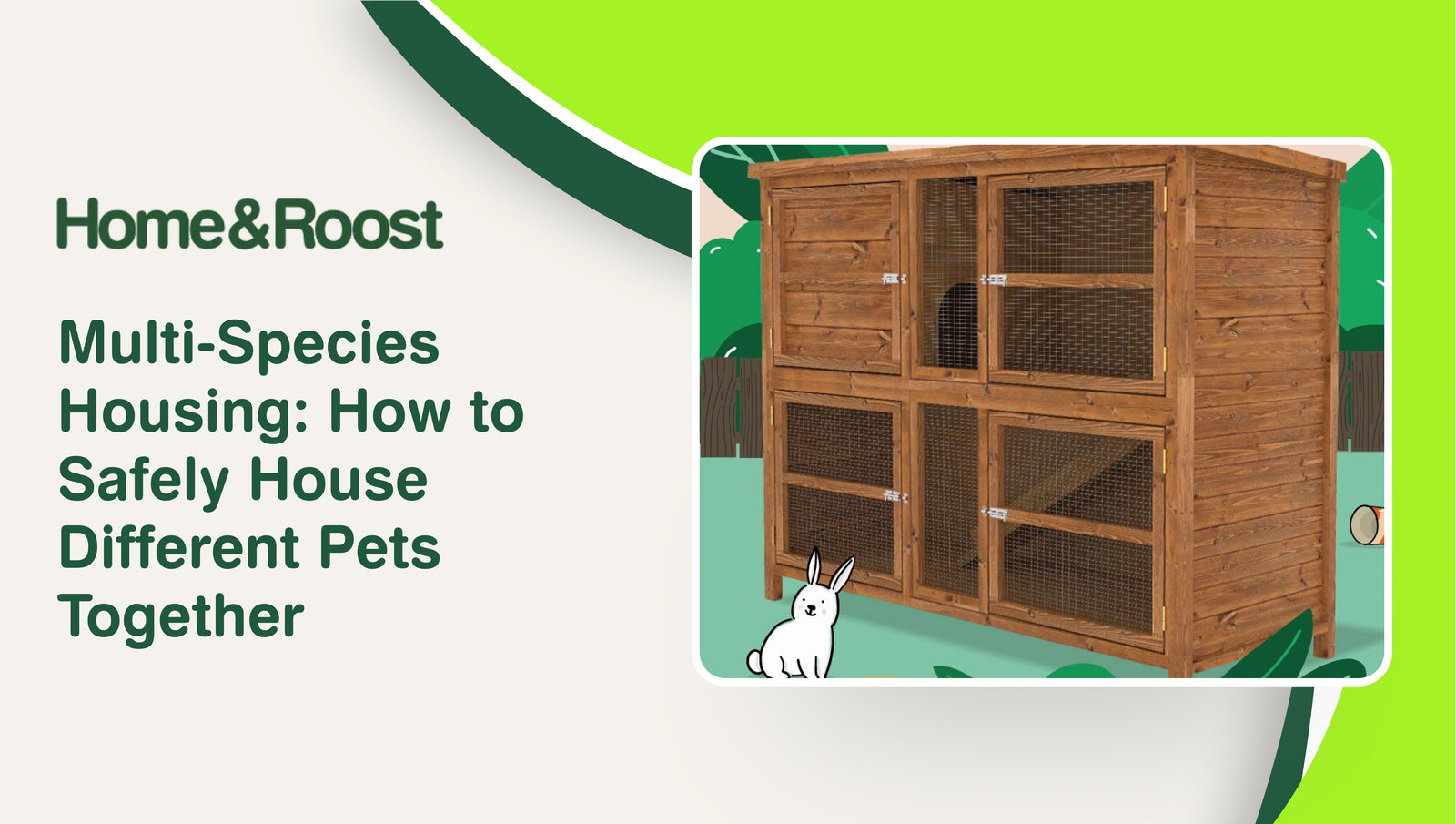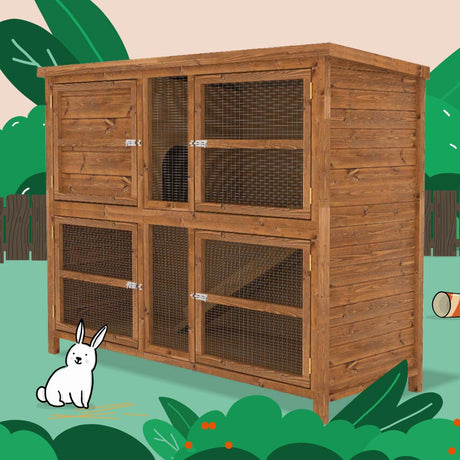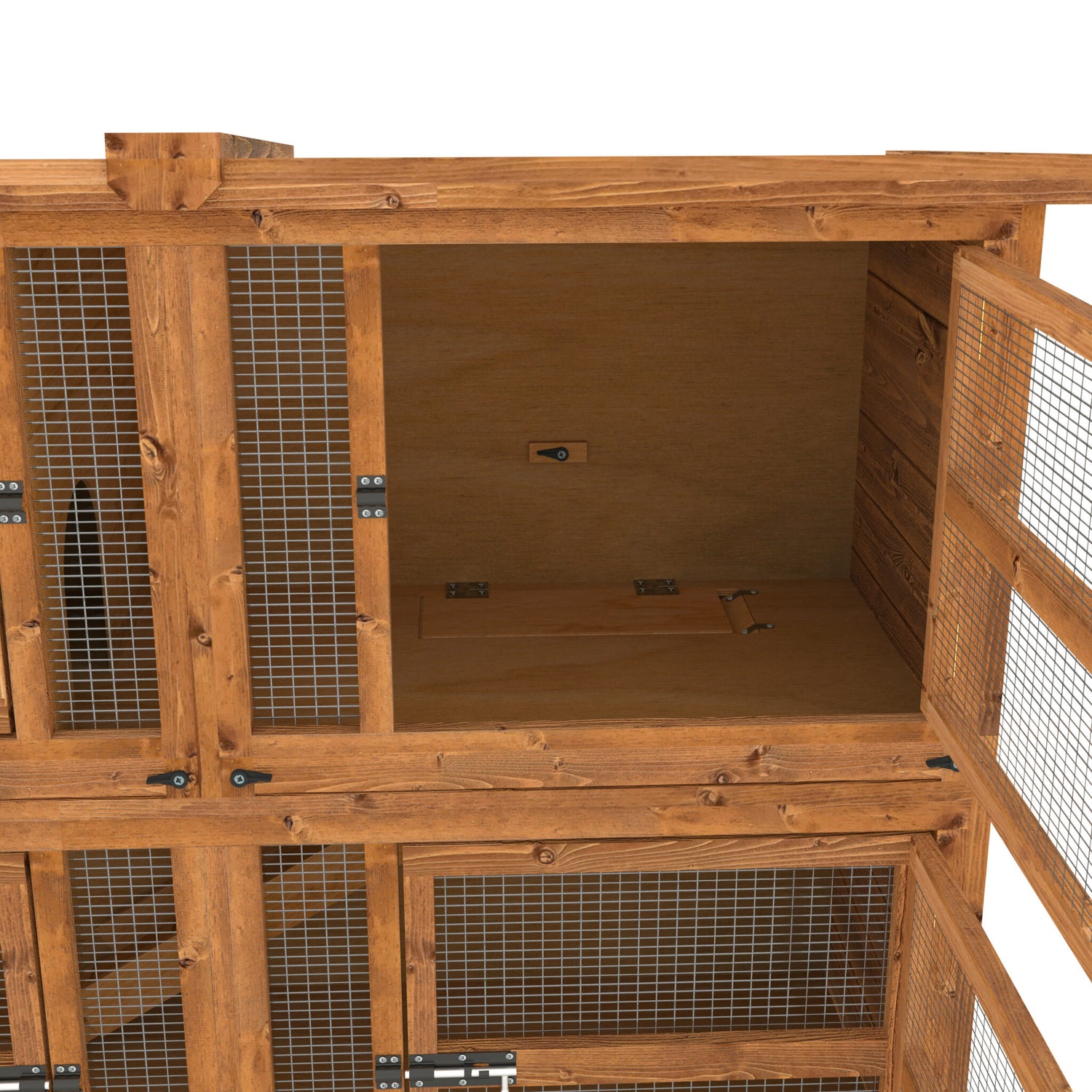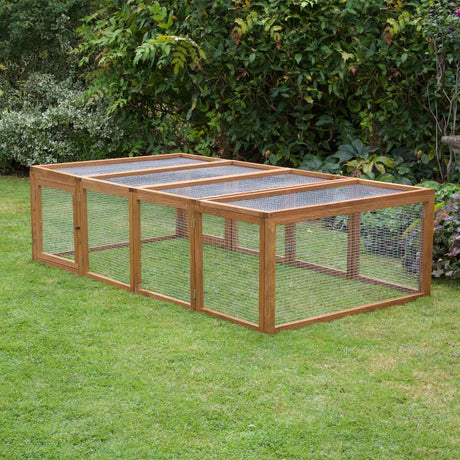Having different types of pets living together can be really fun and interesting. This guide will help you learn how to do it safely, making sure all your pets are happy and healthy. Before we start, let's talk about why this matters and how to do it right.
| Key Takeaways |
|---|
| • Understand each pet's unique needs and behaviours • Choose compatible pet combinations for peaceful coexistence • Create a safe, spacious, and comfortable living environment • Establish proper feeding routines and maintain excellent hygiene • Introduce new pets gradually and carefully • Provide enrichment activities to keep all pets stimulated • Monitor for signs of stress and address conflicts promptly • Maintain regular veterinary care for all pets • Consider legal and ethical aspects of multi-species housing |
Multi-species housing is when you keep different types of animals together in the same space. It can be really fun and rewarding, but it's also a big responsibility. You need to make sure all your pets are safe, happy, and getting along well. Rabbits and guinea pigs are often kept together, but there are many other combinations too! This way of keeping pets can make things more interesting for both the animals and their owners. But it takes careful planning, always watching, and really understanding what each type of animal needs to make sure everyone gets along.
Understanding Your Pets' Needs
Before you start housing different pets together, it's super important to understand what each animal needs. Every pet is unique, just like people! This understanding is key to making sure your pets live happily together and don't have problems later on.
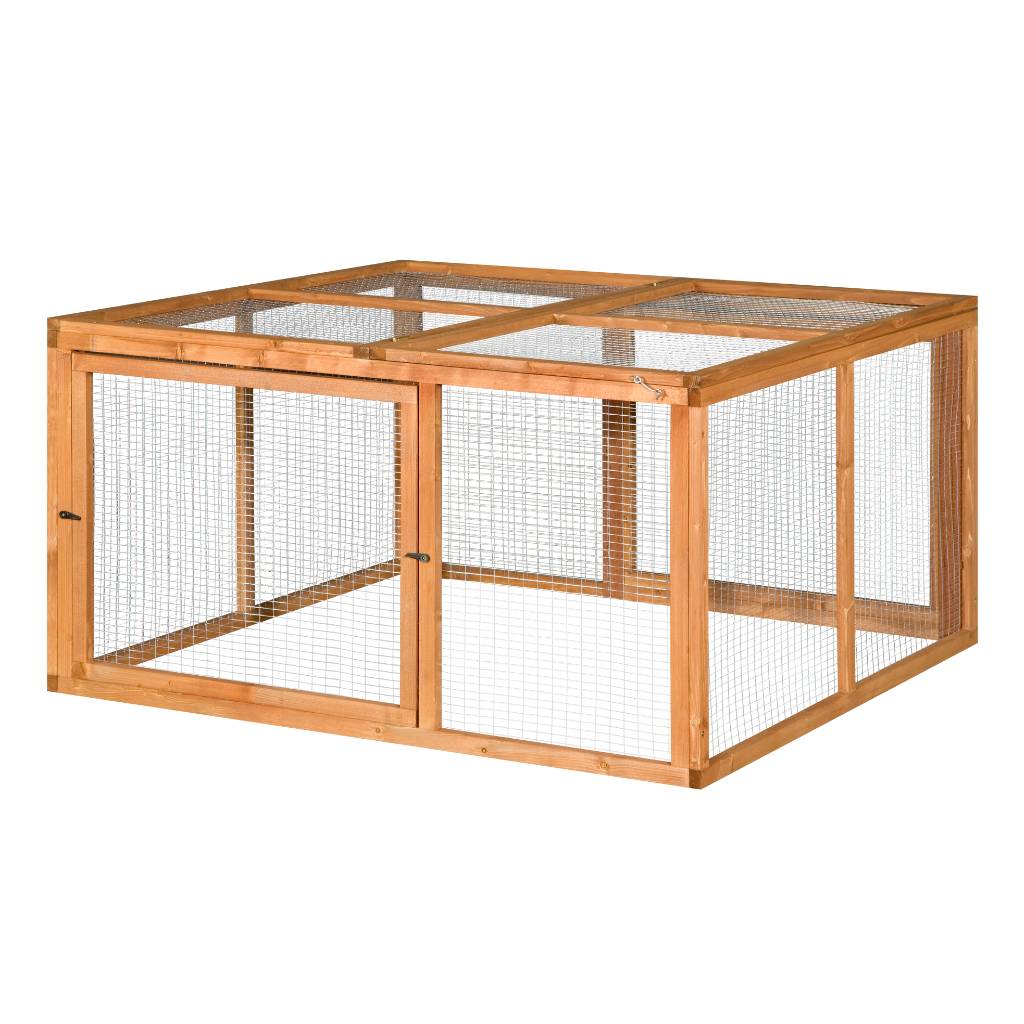
For example, rabbits need lots of space to hop around and explore. They like to dig and look for food. Rabbits need to eat lots of hay and have places to hide where they feel safe. Guinea pigs are friendly and like to have buddies, but they might get scared of bigger animals. They need vitamin C in their food, which they can't make on their own, and enjoy eating different veggies and herbs. Chickens need a safe place to lay eggs and sleep at night. They need to eat a mix of grains, veggies, and protein, and also need small rocks to help digest their food.
When you're thinking about housing different pets together, ask yourself these questions:
- How much space does each pet need? Think about both floor space and climbing space.
- What kind of food do they eat? Are there any foods that might be bad for one pet but okay for another?
- Do they like to be active at the same times of day? Some animals are awake at night, while others are awake during the day.
- Are they usually friendly with other animals? Think about if they like to be social or prefer to be alone.
- Do they need special grooming? Some pets might need baths or brushing more often.
- Do they need special things in their environment, like certain temperatures or lighting?
- How long do they usually live? It's good to think about long-term care.
Choosing Compatible Pet Combinations
Not all pets get along well together. It's like how some people are best friends and others just don't click. Picking pets that can live together nicely is really important for making a peaceful home with different animals. It's a good idea to do lots of research and talk to vets or animal experts before deciding. Here are some pet combinations that often work well:
1. Rabbits and Guinea Pigs: These two can often be good friends if introduced properly. They're both gentle and like similar environments. However, it's important to note that rabbits can carry a germ called Bordetella bronchiseptica, which can make guinea pigs sick. Make sure both are healthy and have their shots before introducing them.
2. Cats and Dogs: With the right training and introduction, cats and dogs can become best buddies! This often works best when they meet as babies. It's important to watch them closely, especially at first, and give each pet their own safe space.
3. Birds and Fish: While they don't play together, having a fish tank near a bird cage can be nice. The fish swimming around can be fun for birds to watch, and the sound of water can be calming for both. Make sure the fish tank has a secure cover to prevent accidents.
4. Rabbits and Chickens: Outside, rabbits and chickens can live together peacefully. They like similar environments and can even share some foods. But it's important to give them separate sleeping areas and make sure the chicken coop is safe to prevent any nighttime problems.
5. Hamsters and Gerbils: While these small rodents should have their own cages, they can be in the same room. They need similar care and can be company for each other without actually being together.
Remember, even if pets usually get along well, each animal has its own personality. Always watch them closely when you first introduce them! It's also important to think about how well they'll get along as they grow up. Some animals might be friends when they're young but might not get along as well when they're older.
Creating a Safe and Comfortable Living Space
Now that you know which pets you want to house together, it's time to set up their home. This is super important to keep everyone happy and safe. The living space you create will really affect how well your pets live together. It should meet the needs of all your pets and also give them places to be alone when they want.
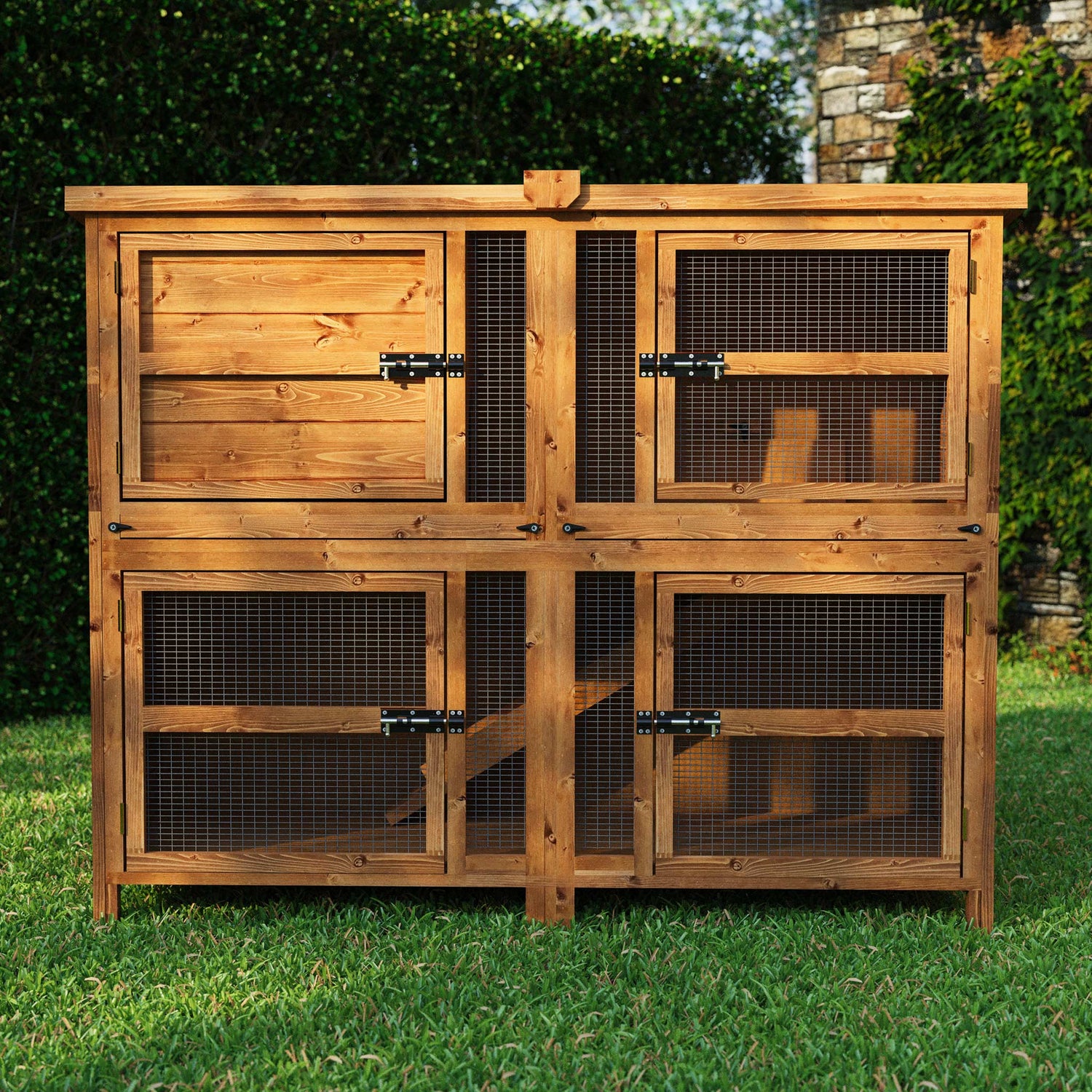
The 5ft Chartwell Double Rabbit Hutch is a great option for housing rabbits and guinea pigs together. It's spacious, with separate areas for sleeping and playing. Here's why it's good for multi-species housing:
- It's big: 1540mm long, 650mm wide, and 1290mm high, giving lots of space for multiple small animals
- Made of strong 10mm timber to keep pets safe and stand up to different weather
- Has fox-proof wire to protect from predators, keeping your pets safe outside
- Includes a ramp with safety rails for easy movement between levels, good for both rabbits and guinea pigs
- Easy to clean with removable cleaning bars, helping keep everything hygienic
- Has separate sleeping and play areas, letting pets have their own space when they need it
When setting up your pets' home, remember these tips:
- Give each pet its own space: Even in a shared home, each animal should have a spot that's just for them. This could be a separate corner, a cosy bed, or even a small enclosure within the larger space.
- Provide hiding spots: All animals like to have a place to retreat when they feel scared or want to rest. This is especially important when different types of pets live together.
- Make sure there's enough food and water: Have separate feeding areas to avoid fights over food. This also helps you keep track of how much each pet is eating.
- Keep it clean: A clean home helps keep your pets healthy and happy. Make a cleaning schedule and stick to it.
- Think about temperature and lighting: Different animals might like different temperatures and amounts of light. Try to create areas with different conditions to suit everyone.
- Use the right bedding: Choose bedding materials that are safe for all your pets. Some animals might be allergic to certain types of bedding.
- Make sure there's good air flow: Good air circulation is important to prevent bad smells and harmful gases, especially in closed spaces.
- Create different levels: If you have space, add platforms, ramps, or shelves. This can help smaller animals feel safe and give bigger pets more area to explore.
Establishing a Proper Diet for Multiple Species
Feeding time can be tricky when you have different types of pets living together. Each animal has its own food needs, and it's important to make sure everyone gets the right food. Good nutrition is really important for keeping all your pets healthy and happy, and it can also help with their behaviour and energy levels.
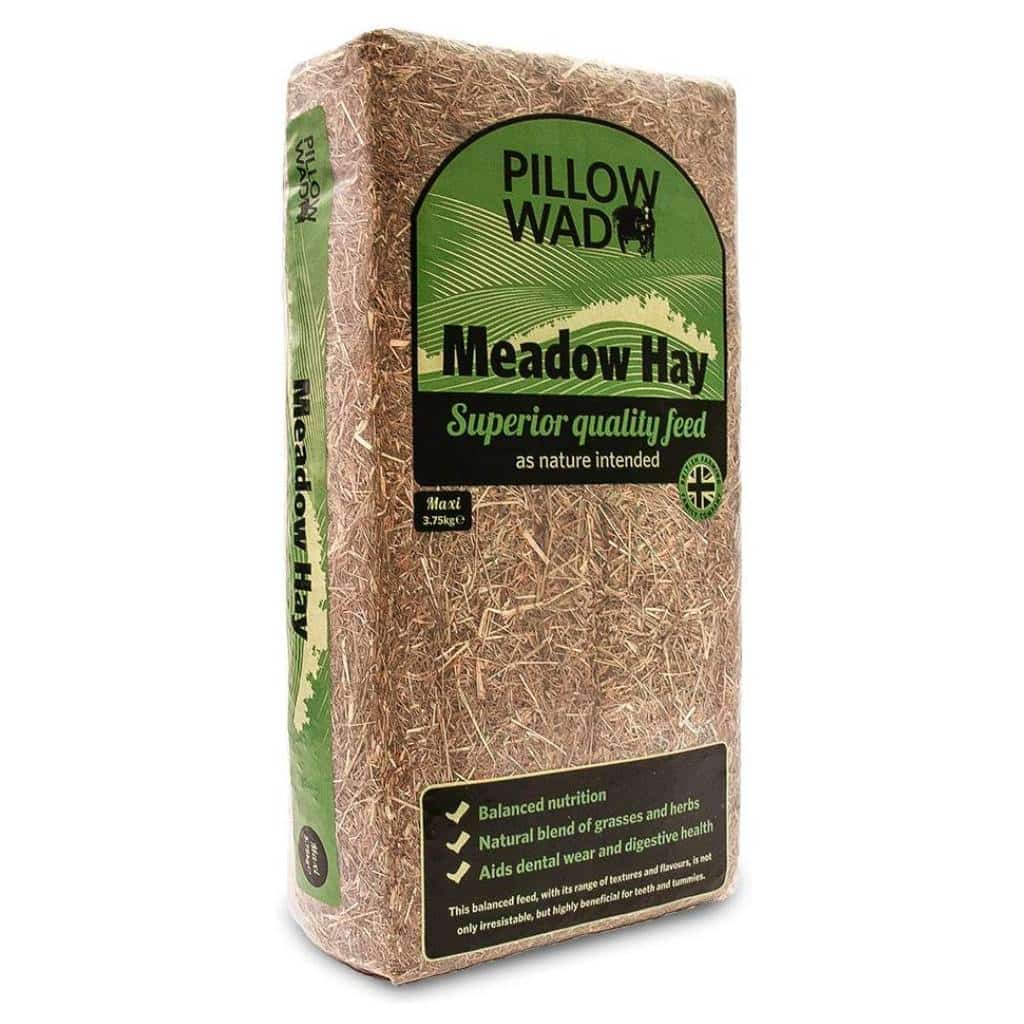
Here are some tips for feeding multiple pet species:
- Feed pets separately: This stops pets from stealing each other's food and makes sure each pet gets its proper diet. It also lets you keep an eye on how much each pet is eating.
- Use different bowls: Have specific bowls for each pet to avoid confusion. This can help prevent the spread of diseases and ensure each pet is getting the right amount of food.
- Schedule feeding times: This helps create a routine and stops pets from always competing for food. It can also help you control portions better.
- Research each pet's needs: Make sure you know exactly what each animal should be eating. Talk to a vet to create a balanced diet plan for each type of pet.
- Consider dietary supplements: Some pets might need extra vitamins or minerals, especially when living with other types of animals. Always ask a vet before adding supplements to your pets' diets.
- Provide species-specific treats: Use treats that are right for each animal as a way to bond and for training. Be careful not to give too many treats, as they should only be a small part of the diet.
- Ensure constant access to fresh water: All pets should have their own water sources that are cleaned and refilled every day.
- Monitor weight and body condition: Regularly check your pets' weight and how they look to make sure they're staying healthy on their current diet.
Remember, some foods that are safe for one pet might be harmful to another. Always double-check before introducing new foods! For example, chocolate is toxic to both dogs and cats, while avocados can be dangerous for birds and rabbits. It's really important to teach everyone in the family about what each pet can and can't eat to prevent accidents.
Maintaining Hygiene in a Multi-Pet Environment
Keeping your pets' home clean is super important, especially when you have different types of animals living together. A clean environment helps prevent diseases and keeps everyone happy. In multi-species housing, keeping things clean is even more crucial as different animals may be more likely to get sick from certain germs.
Here's a simple cleaning routine for multi-species housing:
- Daily: Remove poop and uneaten food. Change water. This stops harmful bacteria from growing and keeps the living space smelling fresh.
- Weekly: Deep clean all housing areas. Replace bedding. Pay special attention to corners and hard-to-reach spots where waste can build up.
- Monthly: Thoroughly disinfect all surfaces and accessories. This includes toys, food bowls, and any climbing structures or hiding spots.
- Seasonal: Do a complete overhaul of the living space, checking for any wear and tear that might need fixing.
Using pet-safe cleaning products is really important. What's safe for one animal might not be for another. Always rinse well after cleaning! Look for cleaning products made for homes with multiple pets, or think about using natural options like vinegar and baking soda for regular cleaning.
Don't forget about chicken coops if you have feathered friends. They need special care to stay clean and healthy. Chickens make a lot of poop, so their living areas might need cleaning more often. Make sure coops have good air flow to help keep the air fresh and reduce moisture buildup.
Additionally, consider these hygiene tips:
- Use separate cleaning tools for each type of pet to prevent spreading germs
- Wash your hands well between handling different pets
- Regularly wash and disinfect pet bedding and toys
- Keep litter boxes for cats or small animals away from food and water sources
- Keep an eye on humidity levels in enclosures, especially for reptiles or amphibians
- Groom pets regularly to reduce shedding and dander in the living space
By sticking to a strict cleaning routine and thinking about each pet's specific hygiene needs, you can create a healthy and comfortable environment for all your animals.
Introducing New Pets to an Existing Multi-Species Household
Adding a new pet to your family is exciting, but it can be stressful for your existing pets. The way you introduce them is really important for making sure they all get along and stay safe. Here's how to make introductions smooth and safe:
- Start slow: Let the animals see and smell each other from a safe distance. This can be done by keeping the new pet in a separate room or enclosure for the first few days.
- Watch all interactions: Never leave new pets alone together until you're sure they get along. This may take weeks or even months, depending on the types of animals and their personalities.
- Create positive associations: Give treats and praise when pets are calm around each other. This helps them think of the other animal as something good.
- Provide escape routes: Make sure all animals have a way to get away if they feel scared. This could be high places for cats, hiding boxes for small animals, or separate rooms for dogs.
- Be patient: It can take weeks or even months for pets to fully adjust to each other. Don't rush it, as this could make them not like each other.
- Use scent swapping: Before face-to-face meetings, try swapping bedding or toys between the new and existing pets. This helps them get used to each other's smells.
- Keep routines normal: Try to keep your existing pets' routines as normal as possible during the introduction time to reduce stress.
- Consider using calming sprays: These can help create a relaxing environment during the introduction process.
- Ask for help: If you're having trouble with introductions, don't be afraid to ask a vet or animal behaviour expert for advice.
Remember, some pets might never become best friends, and that's okay. The goal is for them to live together peacefully. It's important to know when a combination isn't working and be ready to make other plans if needed. Always put the safety and happiness of all your pets first.
Health Considerations for Multi-Species Households
Keeping all your pets healthy is super important, especially when they live together. Different animals can sometimes share diseases, so we need to be extra careful. Taking care of the health of multiple types of pets requires being watchful, regular vet visits, and a good understanding of what each pet needs to stay healthy.
Here are some key health tips:
- Regular vet check-ups: Each pet should see the vet at least once a year. Some types of pets might need to go more often. These check-ups can help find health problems early.
- Vaccinations: Keep all pets up-to-date on their shots. This is really important for stopping diseases from spreading between different types of pets. Ask your vet which vaccinations each of your pets needs.
- Parasite prevention: Use flea and worm treatments as your vet recommends. Different types of pets might need different kinds of parasite prevention, so it's important to use products made specifically for each animal.
- Quick action: If one pet seems sick, separate them from the others and call the vet right away. This can help stop illness from spreading to other pets in the house.
- Proper nutrition: Make sure each pet is getting food that's right for their type and age. Don't feed one pet's food to another, as different animals need different nutrients.
- Dental care: Regular dental check-ups and cleanings are important for many types of pets. Some pets might need daily tooth brushing or special chews for their teeth.
- Weight management: Keep all pets at a healthy weight through proper diet and exercise. Being overweight can cause lots of health problems in all types of animals.
- Stress reduction: Try to keep stress low in the household, as long-term stress can weaken the immune system and make pets more likely to get sick.
It's also a good idea to have a first-aid kit for your pets. Ask your vet what to include for each type of animal you have. A basic pet first-aid kit might include:
- Gauze pads and bandages
- Antiseptic wipes
- Tweezers for removing splinters or ticks
- A digital thermometer (different for rectal or ear use depending on the type of pet)
- Scissors with blunt ends
- Disposable gloves
- Saline solution for cleaning wounds
- Any special items your vet recommends for your specific pets
Remember to learn what's normal for each of your pets in terms of behaviour and vital signs. This can help you quickly notice when something's not right. Keep emergency vet contact information where you can easily find it, and think about learning pet first-aid techniques. By staying on top of your pets' health, you can help ensure a long and happy life for all the animals in your multi-species household.
Conclusion: Creating a Harmonious Multi-Species Home
Let's go over the most important points:
- Understand each pet's needs: Take time to learn about what each type of animal needs in terms of food, home, friends, and health care.
- Choose pets that get along: Carefully think about which types of animals can live together peacefully, considering how they naturally act and what their personalities are like.
- Create a safe and comfy living space: Give enough room, proper housing, and separate areas for each pet to feel secure and happy.
- Feed pets the right way: Make sure each animal gets the food it needs and eats separately to avoid fights.
- Keep everything clean
Great job! You've learned all about how to safely house different pets together. Creating a happy home for multiple types of pets takes patience, knowledge, and dedication. By following the tips and advice in this guide, you're on the right track to making a peaceful and fun environment for all your animal friends.
